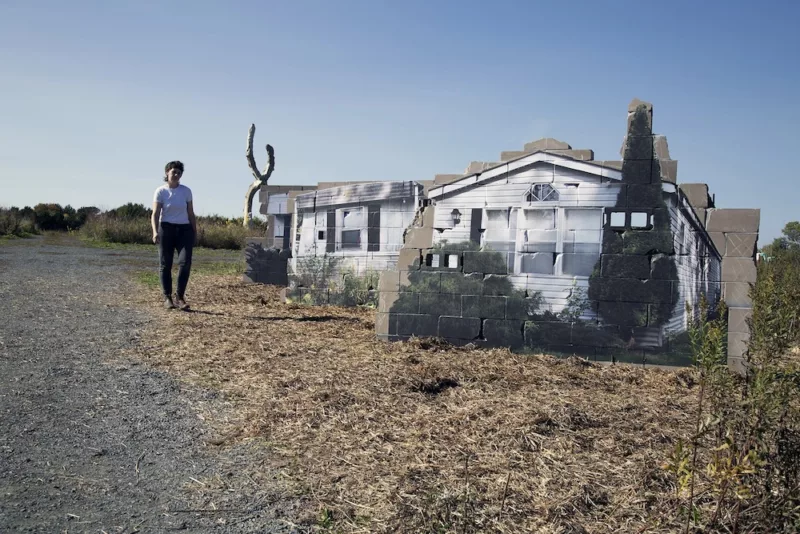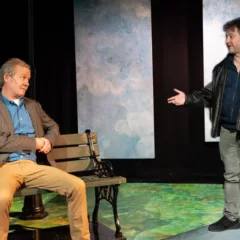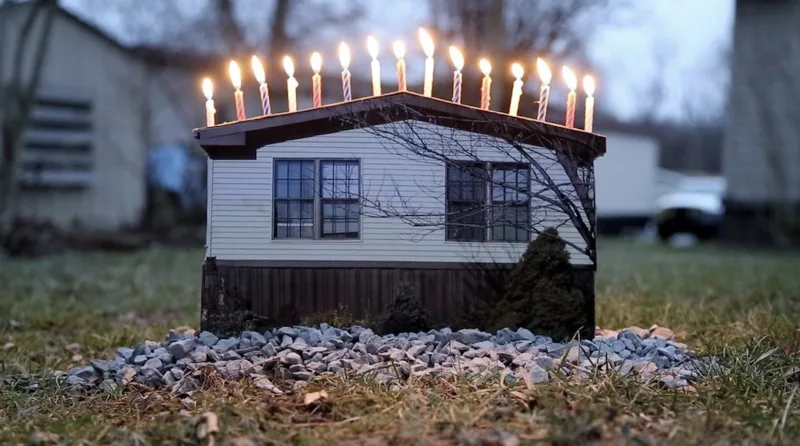
I’ve been watching Amy Ritter’s work grow over the past decade, experiencing her shows, and from emails and conversations we had about art, life, affordable housing, low income, and class issues in America, and more. Her extensive research, experience, and process helps to archive, preserve, and share overlooked and marginalized areas of American culture, specifically the population who live in mobile home parks. Her sensitive lens evokes a kind of humanity, complexity and dignity that is not always seen in representations of people who live in these communities. Having grown up in a double-wide trailer in rural Pennsylvania, the artist uses her experience, art, and political energy to advocate for those who live in these vulnerable places.
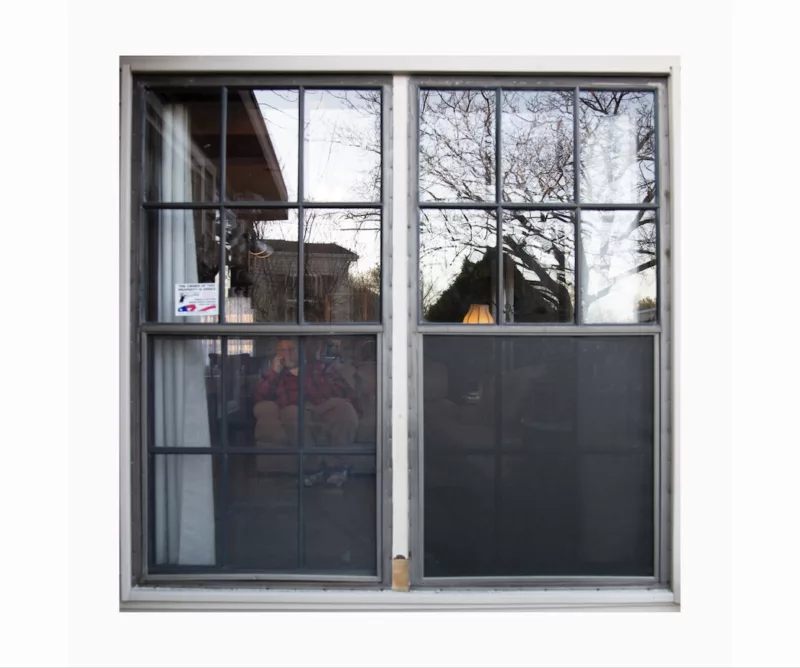
Her recent solo show at Grizzly Grizzly, HIDDEN IN PLACE: The Journey of the American Dream, curated by Erin Rose Boyle, shares stories from her father’s mobile home park, Lil’Wolf, in Orefield, Pa. Her father is the main character in her works, becoming an icon or symbol for the mobile home communities. Upon entering the gallery you are immediately drawn into the life sized photo mounted on plywood. The image takes a tromp’loil form on the wall, as we are placed outside looking into her father’s living room. Ritter’s directness in this and the rest of her works is key to our understanding of the content. Individuals and scenes are not glamorized, and there is no negative judgment either. Her work compassionately addresses pressing social concerns including affordable housing, corporate greed, healthcare, and class issues by telling the stories of those who live in mobile home parks. The careful documentation of her family, father, childhood home, and neighborhood represents those who live in mobile home parks with sensitivity, dignity, and nuance. This act is a form of care in itself.
Ritter’s material explorations are as economic and direct as her content. The artist’s careful selection of materials has been chosen to support the work’s concepts, keeping us deeply focused on the subject at hand. Her materials are familiar and accessible like plywood, the use of wheatpaste on her photos, and the graininess of an older cam-corder. It is important that there is no real “dressing up” of these materials. A slicker photo or material choice would risk appearing more like poverty porn or virtue signaling than the critical perspective and deep humanity these works hold. They are also crafted with love, there’s a palpable sense of care that goes into the construction of these DIY materials which shows her respect for the subjects and narratives depicted.
Like many mobile home residents, Ritter’s father is a baby boomer, a group that was promised the world, but now some are economically struggling as they approach or enter retirement. These narratives of Ritter’s father expose the economic strain and psychological challenges that poverty and low income cause with both long and short term effects. People who live in mobile home parks have often been represented as negative stereotypes, and their struggles largely ignored in the media. These communities have been made even more vulnerable because corporate investment companies buy the land that mobile home parks sit on, then charge steep rent hikes that stretch low income households to their limits. These companies often neglect the grounds, and because these homes are not actually mobile, this puts entire communities at great financial risk.
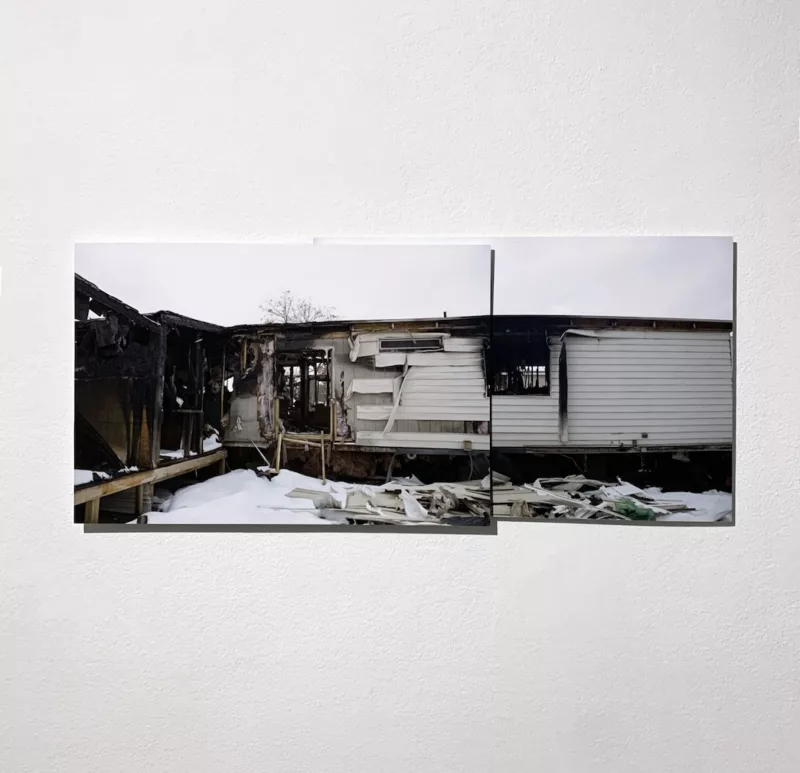
Art, life, family, and activism are seamlessly blended in Ritter’s practice, this balance takes a radical kind of love, attention, reflection, and most importantly— it allows art to become a platform for visibility and a way to care for others. Ritter’s work uses art as a tool to critique an imbalance of power, while doing this the artist has developed her own form of activism to make actual change, especially for those at Lil’Wolf. Ritter has empowered residents to successfully work with local newspapers to help draw attention to the negligence of the corporate landlords. Many of these communities across the country are organizing to purchase the land before they are sold to these companies.
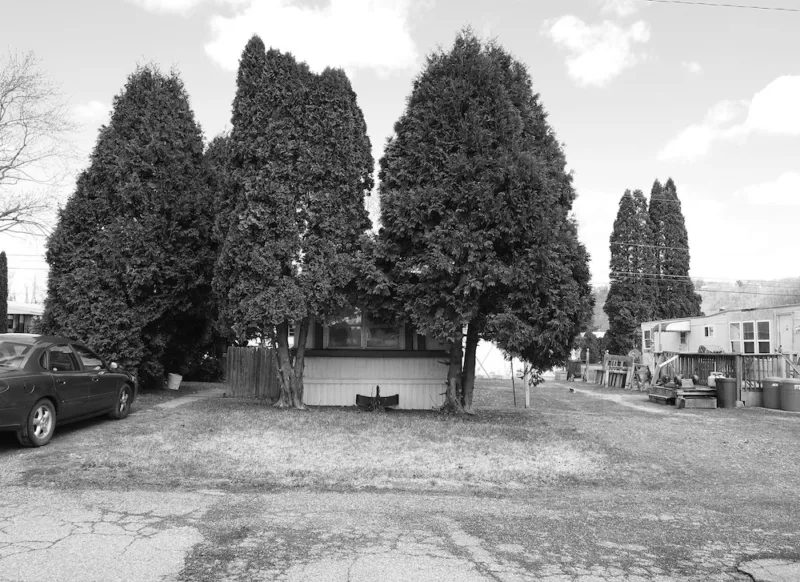
Over the past 8 years Ritter has been documenting mobile home portraits, interviewing residents and compiling research on the history and culture of mobile home parks through her project, Mobile Home Archive. Many of these images were on view at the Grizzly Grizzly show.
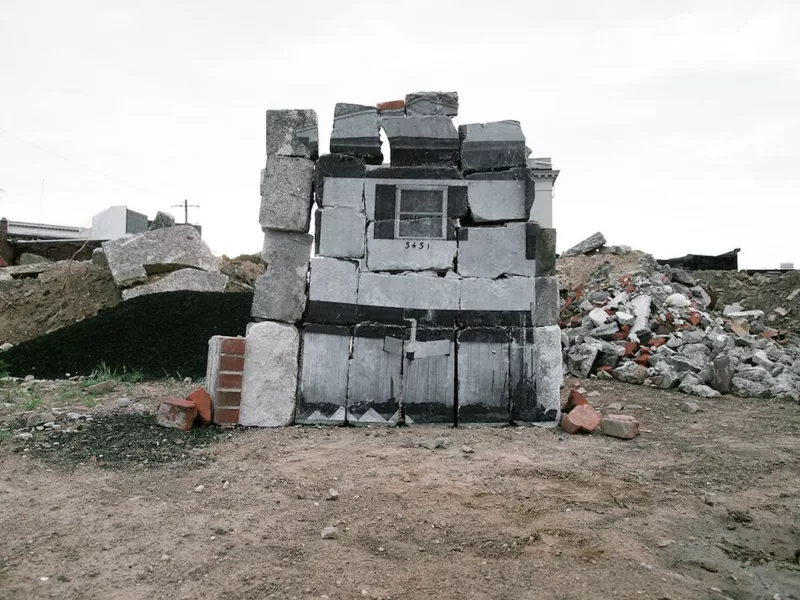
As part of her research, Ritter asked residents of Orefield’s L’il Wolf to define their idea of The American Dream, revealing a community of people hoping for stability, healthcare, decent jobs, affordable education, retirement benefits, happiness, and dignity. Something I hear people repeating across these desires is insecurity and worry. There is a deep sadness that they were not able to maintain a similar quality of life that they grew up with, and felt entitled to. These stories represent a much broader narrative about wealth and class in America, and call to attention the need for change. Pennsylvania’s minimum wage has been $7.25 since 2009, but the cost of living has increased at a pace far greater than average annual inflation. MIT Living Wage Calculator
Hearing each person speak about their desires and needs shows how much common ground we all have, from needing a livable wage, to health and retirement benefits, to affordable housing and education. It makes me think about how our snap judgments and political and cultural binaries and biases prevent us from making some important progressive change for everyone. Ritter’s work provides viewers with a radical example of empathy: humanizing the complexity of the individual. Art gallery visitors don’t typically have a soft spot for white boomers who might vote for Trump, but if we could all connect to one another on a human level, maybe more progress could be made to raise the bar on everyone’s quality of life.
It’s always exciting to see Amy’s work in Philadelphia. Amy grew up about an hour north of Philadelphia in Orefield, and attended Tyler School of Art. She and I also taught together at Tyler’s Continuing Education program when she finished grad school at The Ohio State University. When I spoke with Amy, she told me how Philly has always been a kind of home for her to come back to between residencies and times in her life. In 2015, a temporary and guerrilla artwork, “Jasper St.,”part of what would become a series titled, Cinder Block Walls, was built from construction debris in a lot where a building had recently been demolished. Cinder blocks are the structural units that a mobile home rests on. The artist built three walls that were four feet wide by four feet tall and pasted images of mobile homes on them. The impermanent quality of an installation that would soon become rubble again evoked the ephemeral quality of mobile homes themselves. This work and series became an important piece in her development as an artist.
